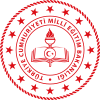Istanbul Japanese School
 From Wikipedia - Reading time: 7 min
From Wikipedia - Reading time: 7 min
| Istanbul Japanese School イスタンブル日本人学校 İstanbul Japon Okulu | |
|---|---|
 | |
| Address | |
 | |
Tanburi Ali Efendi Sokak NO.16 Etiler Istanbul Turkey タンブリ アリ エフェンデイ ソカク NO.16 エチレル イスタンブル | |
| Coordinates | 41°04′37″N 29°01′48″E / 41.0769548°N 29.0300571°E |
| Information | |
| Website | ijstr |
Istanbul Japanese School (イスタンブル日本人学校, Isutanburu Nihonjin Gakkō, Turkish: İstanbul Japon Okulu[1]) is a Japanese international school located in Etiler, Beşiktaş, Istanbul, Turkey.[2]
The school is run by the Japanese Education and Culture Association (Japanese: 日本文化教育協会, Turkish: Japon Egitim Kultur Dernegi). The diploma received here cannot be qualified as a Turkish school diploma.
As of 2015, the school has about 80 students. They use a school bus to travel to and from the campus.[3]
See also
[edit]References
[edit]- ^ "ETKİNLİK LİSTESİ." 2010 TURKIYE'DE JAPONYA YILI. Embassy of Japan in Turkey. Retrieved on 11 August 2015.
- ^ "学校紹介." (Archive) Istanbul Japanese School. Retrieved on January 2, 2014. "タンブリ アリ エフェンデイ ソカク NO.16 エチレル イスタンブル/Tanburi Ali Efendi Sokak NO.16 Etiler Istanbul Turkey"
- ^ "日本人学校、安全対策急ぐ…通学バスルート確認" (Archive). Yomiuri Shimbun. February 3, 2015. Retrieved on August 12, 2015. "トルコのイスタンブル日本人学校では、児童、生徒約80人全員がバス通学で、運行ルートに狙われそうな場所はないか、確認を進める。同国では、反政府武装組織の犯行とみられるテロが続く。そこに邦人人質事件が発生し、同校は1月22日、不審者が侵入したことを想定した訓練を行った。門脇興次校長は2日、「家庭や大使館、警察と協力し、子どもたちの安全確保に万全を期す」と力を込めた"
Further reading
[edit]Books and reports by those affiliated with the school:
- Mine, Toshirō (峰 敏朗). イスタンブール日本人学校. 峰敏朗著(JETRO books, 46) 日本貿易振興会, 1998.2. NCID: BA35636978. ISBN 4822408108. See profile at CiNii.
- Kataoka, Sanzou (片岡 三蔵 Kataoka Sanzō; 前イスタンブル日本人学校校長・大阪府大東市立南郷小学校校長). "イスタンブル日本人学校の学校経営." 在外教育施設における指導実践記録 23, 146–150, 2000. Tokyo Gakugei University. See profile at CiNii.
External links
[edit]- Istanbul Japanese School (in Japanese)
Licensed under CC BY-SA 3.0 | Source: https://en.wikipedia.org/wiki/Istanbul_Japanese_School6 views | Status: cached on November 24 2024 18:01:23↧ Download as ZWI file
 KSF
KSF